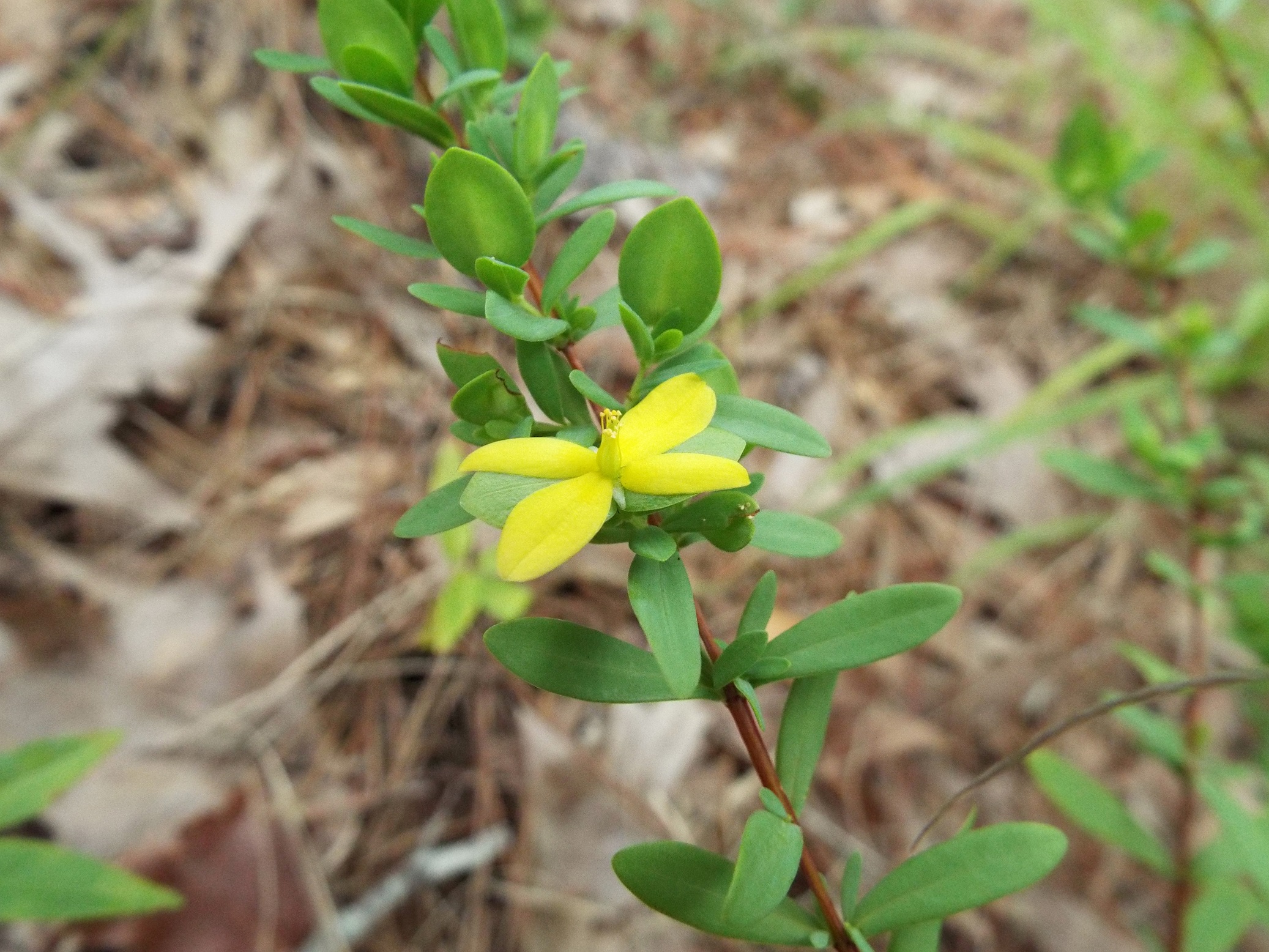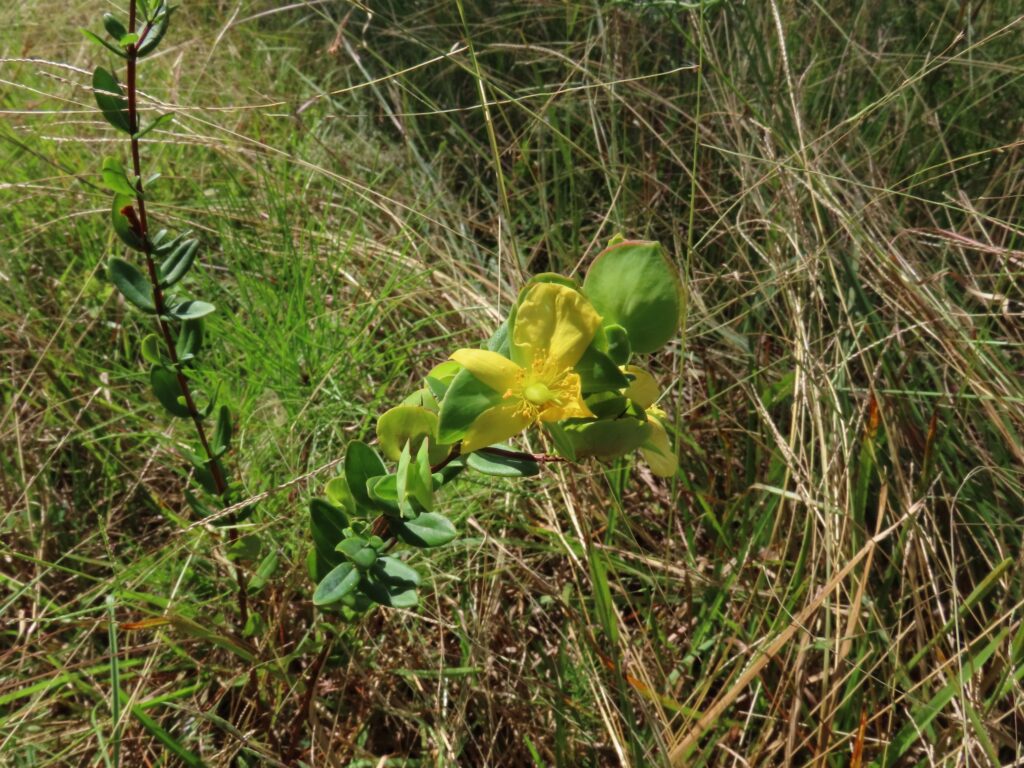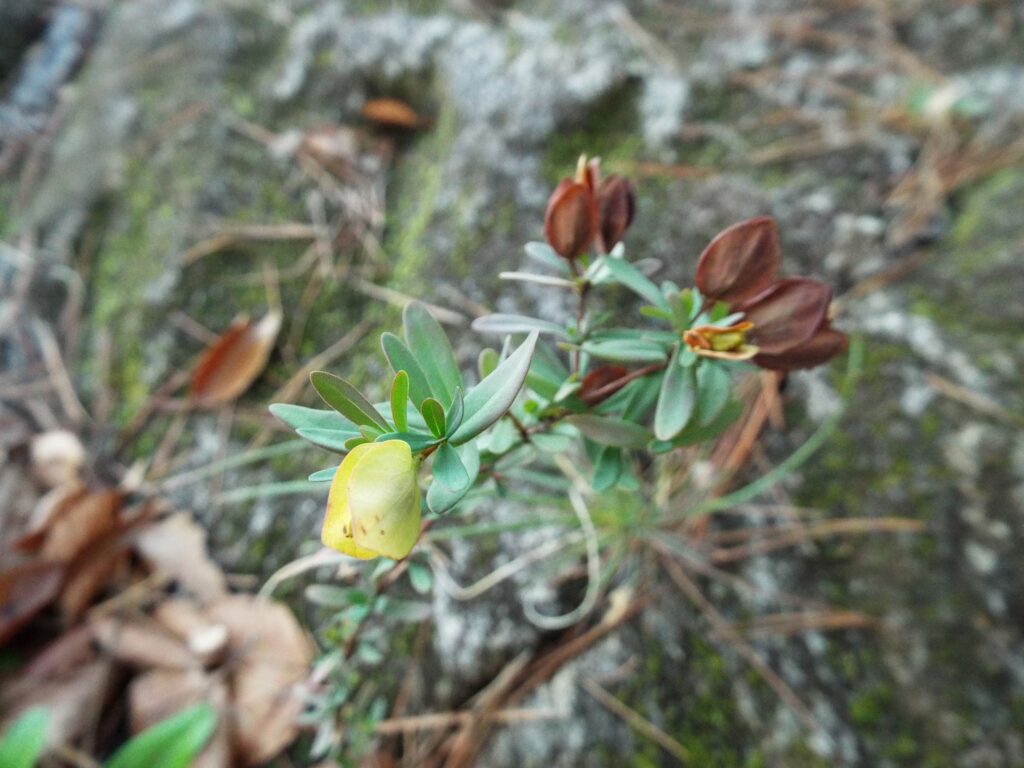




This week for Flora and Fauna Friday we have an overlooked but very common wildflower, St. Andrew’s-cross (Hypericum hypericoides).
St. Andrew’s-cross is found throughout the Southeast and South Carolina. It’s a member of the St. John’s-worts and, in my opinion, our most common and easily identified member of their genus. St. Andrew’s-cross can be found in all manner of upland habitats and is particularly common on our sandy coastal soils. St. Andrew’s-cross is a small woody shrub, often only growing one to three feet tall with sparsely vegetated branches. It’s perennial and evergreen, with opposite, simple leaves a shade of soft, pale green. Its stems are narrow and rich cinnamon-brown. St. Andrew’s-cross blooms in the dead of summer, generally starting in July and continuing through August. Its flower is light yellow with four narrow petals, laid flat atop two spade-shaped bracts, and at the center a small off-green ovary in a cloud of short anthers. Distinctly, its flower petals are set apart from each other at roughly sixty and one-hundred-and-twenty degree angles, rather than a square ninety degrees. Once pollinated, the petals fall away and the two bracts dry and fold up to enclose the ovary like a clamshell. These folded up bracts, along with the diagonal flowers, make this plant easy to identify in the field.
Today’s plant gets its common name from the uneven diagonal arrangement of its flower. This petal pattern of the St. Andrew’s-cross flower is reminiscent of the shape of St. Andrew’s Cross, the form of which is best exemplified by the saltire on the Flag of Scotland. The Apostle Andrew was said to have been crucified on a diagonal cross. The flag of Scotland prominently displays a single diagonal cross and was named in reverence of St. Andrew. The Scottish flag itself is likely the inspiration for the name of the St Andrew’s-cross plant.